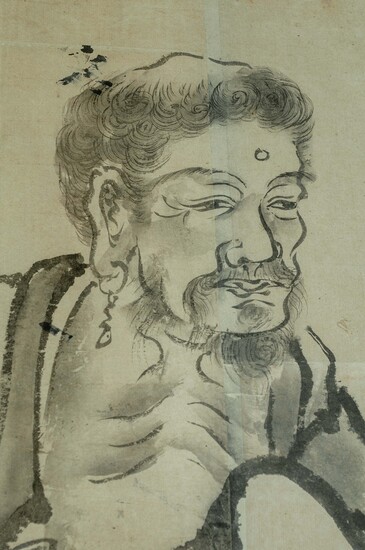Large Japanese ink drawing of a traveling monk
A wandering Buddhist monk framed by a disk of sun or moon, barefoot and plainly robed. His bearded face carries the symbols of his enlightenment. The scene is captured in simple and elegant lines of pen and ink. On squares of hand-made rice paper. Edo period. Zen Buddhist monks from China introduced this style of ink art to Japan in the fourteenth century where over time the brush strokes were reduced in number and simplified and were often combine with poetry to create the sumi-e style that we know today. The focus of the art of ink painting since its inception has been on the quality of the line; this is what captures the form. The simple but sometimes bold use of the brush would often capture the spirit of the subject, and would convey a wide range of expression, from dynamic power to elegance and tranquility. 57" high, 25 1/2" wide
Publication year:
Vendor: Cedar Tree Antiques
Buy Now on
A wandering Buddhist monk framed by a disk of sun or moon, barefoot and plainly robed. His bearded face carries the symbols of his enlightenment. The scene is captured in simple and elegant lines of pen and ink. On squares of hand-made rice paper. Edo period. Zen Buddhist monks from China introduced this style of ink art to Japan in the fourteenth century where over time the brush strokes were reduced in number and simplified and were often combine with poetry to create the sumi-e style that we know today. The focus of the art of ink painting since its inception has been on the quality of the line; this is what captures the form. The simple but sometimes bold use of the brush would often capture the spirit of the subject, and would convey a wide range of expression, from dynamic power to elegance and tranquility. 57" high, 25 1/2" wide
Publication year:
Vendor: Cedar Tree Antiques



